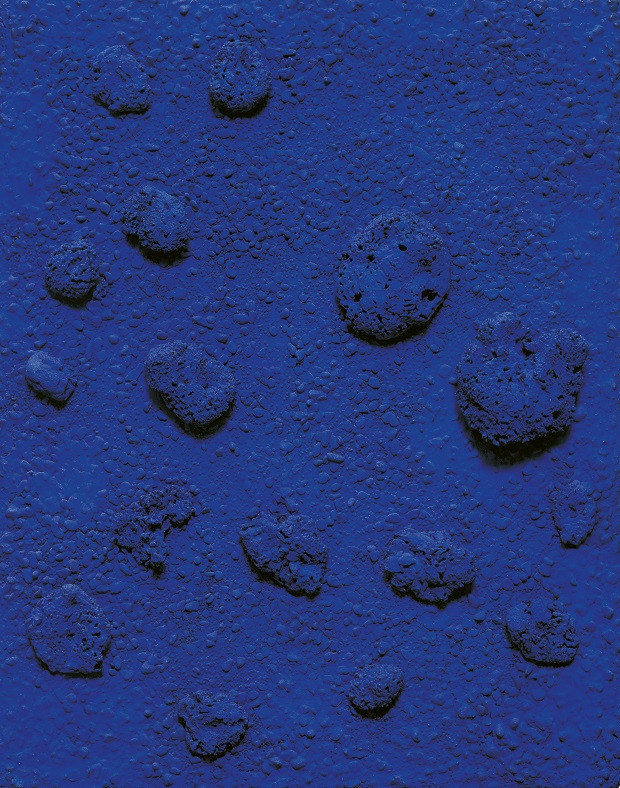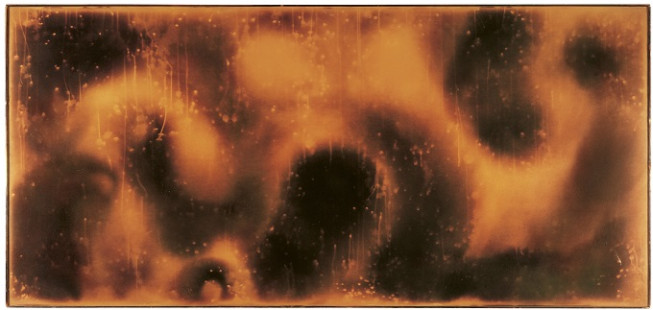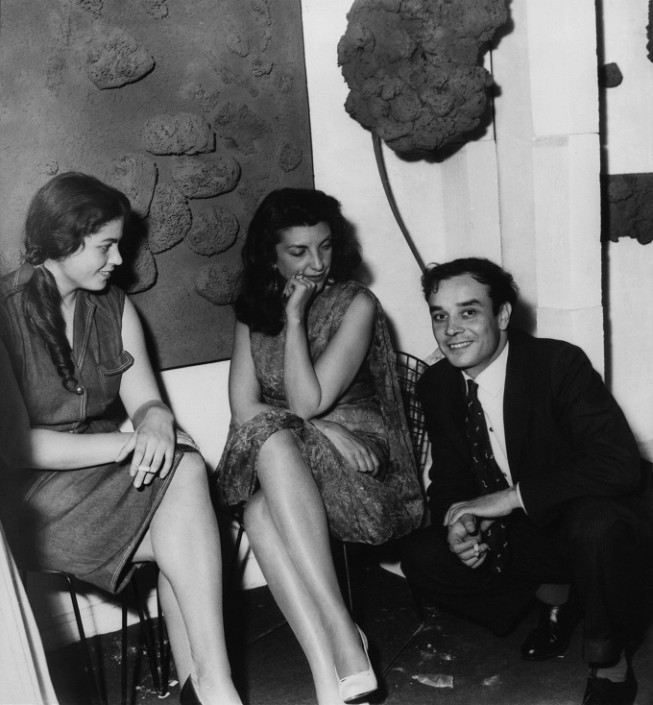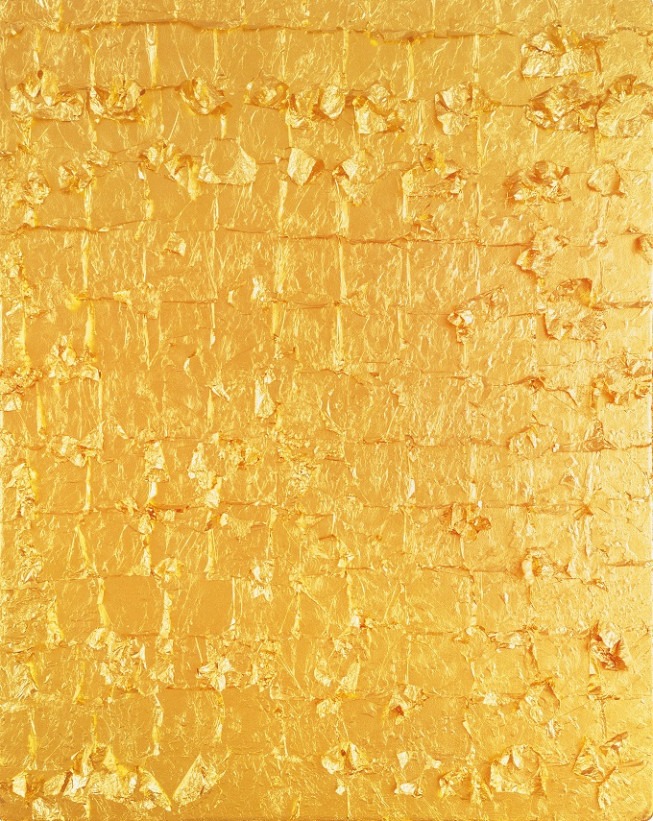By taking the intimate as a common thread, this new exhibition on Yves Klein offers an unprecedented reading of his work, demonstrating at the same time how much his private life was also the driving force of his aesthetic commitments. Interview with Cecilia Braschi, curator of the exhibition.
Until March 26, 2023, the Hôtel de Caumont-art center in Aix en Provence highlights the life and work of Yves Klein (1928-1962) in a new light. Cecilia Braschi, head of exhibitions at the art center, and Denys Riout, professor of art history at the University of Paris I Panthéon-Sorbonne, the two curators of ” Yves Klein intimate connect the work and personal life of the inventor of the International Klein Blue (IKB). ” Knowledge of the Arts spoke with Cecilia Braschi to understand how they set up this unprecedented event.
There is a Klein paradox. He never ceases to stage himself to the point of becoming a myth, prefiguring the strategies of Joseph Beuys or Andy Warhol. However, his private life remains largely unknown. How to expose these two facets?
This paradox is at the heart of the exhibition. Yves Klein forged from scratch a story of his character as an artist to the point of concealing the intimate vagaries of his life. But this story hides a human dimension that naturally nourished his work. This is what we wanted to present through a body of known works (the series of Blue Monochromes, Blue Sponge Sculptures, Anthropometries, Monogolds, Fire Paintings) and documents from the Yves Klein Archives, photographs, writings or movies revealing his intimacy.
Yves Klein, Monogold untitled, (MG 8), 1962, gold leaf on panel, 91 × 73 cm, private collection © Succession Yves Klein c/o ADAGP, Paris, 2022
How is the exhibition organized?
It seemed essential to us to start with his imagination, the one forged in childhood. We present the environment in which he grew up, notably by summoning his parents, both artists, one engaged in figuration, the other in abstraction. Between them, they represented the panorama of post-war art with its quarrels of Chapel.
Klein’s entire artistic journey should be read as going beyond this debate.
His monochromes strongly attest to this. This section would not have been complete without the study of his great passion: judo. From 1947, he will dedicate his life to this sport which he considers as a discipline, a philosophy and a way of apprehending the world. This is decisive for his artistic practice. This first section opens with the one devoted to blue, monochrome and the immaterial.

Yves Klein, Fa, (RE 31), 1960, pure pigment and synthetic resin, natural sponges and pebbles on panel, 92 x 73 x 11 cm, private collection © Succession Yves Klein, ADAGP, Paris, 2022
Two rooms then present the Anthropometries, here highlighted through the testimonies of his models attesting to their mode of collaboration with the artist. A section bringing together works by Klein with other artists looks back on an unknown aspect of his practice: the exchanges and collaborations with his friends and critics (Jean Tinguely, Pierre Restany, Arman, Claude Pascal, christo…). It should be seen as a search for balance between the radicality of his work and his need, despite everything, to confront himself with the reality that surrounds him.
Then come the paintings made with a flamethrower. Fire is literally a metaphor for the artist who, at the height of his glory, initiates a form of destruction that corresponds to an attraction, or an obsession, for the immaterial. At this precise period, Klein fails to take care of his health by multiplying his activities, exhibitions and travels. We then continue with the central question of devotion, religion, spirituality to conclude symbolically with its “flight”, so to speak, towards space, the void or the immaterial.

Yves Klein, Untitled Fire Painting, (F 24), 1961, burnt cardboard, 139 × 299 cm, private collection © Succession Yves Klein c/o ADAGP, Paris, 2022
Many commentaries on Klein assert that he was indeed a devout Catholic!
All his life, all his work are marked by a quest for spirituality. This need can be found in his youth, when he accompanied his dear aunt Rose Raymond – known as auntie – to mass. Later, he studied the Rosicrucians and then became a member of the Archers of San Sebastian (1956). He therefore has a solid religious formation, but the testimonies that we have gathered attest that he did not talk about it. His mysticism, moreover, can also be linked to other sources such as judo or the Zen philosophy discovered during his trip to Japan in 1952-1953.
The paradox is constant with him: on the one hand, he stages the ritual of his wedding in the church in 1962 with a very calculated pomp. On the other, during a pilgrimage in 1961, he secretly deposited an ex-voto to Saint Rita of Cascia. This ex-voto, which we are presenting exceptionally in the exhibition, is intimate. In the accompanying prayer, Klein asks the patron saint of desperate causes for help so that everything he creates will be beautiful.

Yves Klein, Iris Clert (centre) and Rotraut Uecker at the opening of the exhibition “Bas-reliefs in a forest of sponges”, Iris Clert gallery, Paris, 1959 Photo ©: All rights reserved © Succession Yves Klein c/o ADAGP, Paris
Yves Klein is associated with the notion of avant-garde. Yet he had said: In no way do I consider myself an avant-garde artist. I make a point of specifying that I think and believe to be a classic, perhaps even one of the rare classics of this century. How to interpret this statement?
For him, to break radically with the art of his time and turn his back on the antagonism between abstraction and figuration, is to refuse the logic of the avant-garde to return to an idea of a more essential art, a art that is located outside the chapels and movements. He says it himself: he is in going beyond the problematic of art “. His desire to return to pure color is really to place himself before any codification, it is to refuse the line, the composition, the lines, the narration. To be classic for Klein is therefore to rediscover the base of the sensation present for example in the icons or in the purity of the practice of judo. The exhibition at Iris Clert (April 1958) where he presents the void, that is to say a space without anything tangible, fully participates in this idea. Klein is above all an artist who anticipates the following eras. There is in germ the body artperformance, conceptual art, going beyond painting, the idea of installation… But defining oneself as a classic also means claiming to belong to a great the history of art that he likes to summon, with artists such GiottoDelacroix or Van Goghregularly quoted in his writings.
The complexity of Klein’s work gives rise to stubborn misunderstandings. Can this exhibition rectify that?
Klein’s work is made up of paradoxes that are nevertheless rich in meaning, of opposing elements that must be understood as a whole. Each era perceives different aspects in it because it is a work that remains current and that never ceases to offer new possibilities for analysis. Take this multidisciplinary side, too often ignored, take its relationship to its own image, the idea of collaboration, of spirituality… What we are trying here is precisely to open the field of interpretations by reintroducing the intimate to try to dive into this complexity.
“Intimate Yves Klein”
Hôtel de Caumont-art center
3, rue Joseph Cabassol, Aix-en-Provence
Until March 26, 2023
Want to continue
your reading?
This article is reserved for our subscribers; subscribe to finalize your reading and enjoy many other exclusive advantages:
- The unlimited site: articles, the best exhibitions of the moment
screening, analyzes of works… - smart: the editorial newsletter reserved for subscribers
- Your magazine in digital format with each issue
- Free invitations to exhibitions throughout France

